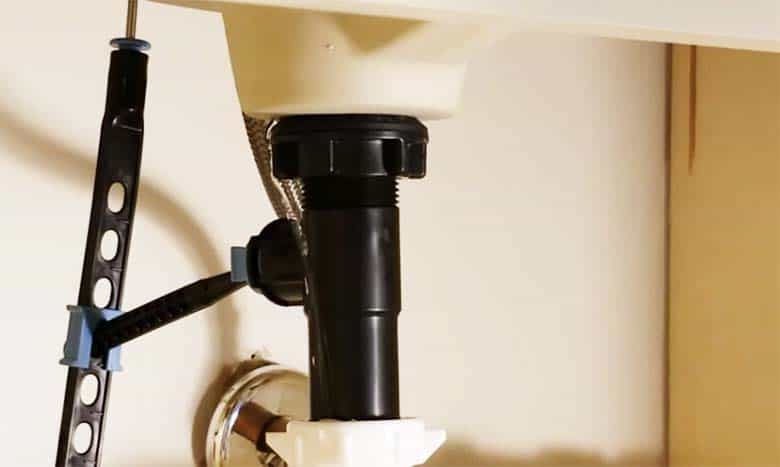In many homes, people will place the washing machine in the basement. It allows them to easily remove dampness from their home’s main rooms and laundry their clothes in the basement. However, when installing the washing machine in the basement, you need to ensure proper drainage.
Therefore, basement washing machine drain plumbing becomes important. You will need to connect the washing machine with the main drain pipe in the basement. You can connect the machine with the floor drain using a washing machine hose to help it drain easily.
So, let’s jump into finding the best ways to connect the laundry with the basement drain plumbing using a hose to keep the basement dampness-free and clean.
Basement Washing Machine Drain Plumbing Considerations:
When you install the washing machine in the basement and set up the right drain plumbing, you need to keep a few facts in mind.
Consider the basement drain system:
The drainage system in the basement can be of different types. Thus, you need to look at the basement floor drain diagram closely. It includes:
- Floor drain
- Interior French drain
- Exterior drain tile
Now, let’s see the details of these drain types in the basement.
Floor drain:
Usually, a floor drain is the most common drainage system in the basement. It comes with the new constructions of most homes these days. If you have a floor drain, you can easily connect the washing machine hose. Also, you might even put the hose through it, allowing the laundry to drain directly into the floor drain.
Interior French drain:
Next, you might have French interior drains in the basement. It has a perforated pipe. It collects and carries the water right into the pit. So, the water is then drained into the surface using a pump. The pipe is covered with crushed stone or gravel for protection. Also, plumbers install it right under the basement floor.
Exterior drain tile:
Finally, there’s the exterior drain tile. It is usually located at the exterior perimeter of the basement. It effectively collects waste water from the basement and ground to directly drain it into the municipal sewer line.
Having an exterior drain tile in most homes is a must due to the municipal building codes. So, you can connect the washing machine hose with it. Then pump out the water to the main drainage and sewer line of the home.
How far you have to lift the water:
When installing the washing machine in the basement, it needs to pump out to drain the used water. You should consider how much the pump needs to lift the water to reach the surface level of your home.
Usually, the pump will require lifting the water around 6 to 8 feet. Thus, you must consider its pumping capacity when installing the pump. Also, don’t buy a big pump since you don’t need to pump out too much water from the washing machine.
But the real question is, “Can you drain a washer into a sump pump?” Well, you should never install the drain line of the washing machine with the sump pump. It can contaminate the groundwater and cause health hazards.
Washing machine size and capacity:
The bigger the washing machine is, the more water it will use. So, with bigger washing machines, you need to drain more water. So, check its size. Usually washing machine at home has a 7KG (15.5lbs) capacity is a standard one.
If you have bigger washing machines such as 12KG or even more, you will need to drain more water.
Distance between the washing machine and drainage location:
Since you will use a washing machine hose to drain the device, you must measure its distance from the basement drainage. Technically, the distance shouldn’t be too long so that the hose needs extra pressure to reach the draining spot.
Most washing machines come with a 5ft to 10ft long hose. If the drainage location is too far away, you will need a hose extension.
How to Plumb a Washing Machine Drain in the Basement?
When you have considered all the facts mentioned above, you can start thinking about the washing machine’s drainage. You may connect the washer with the basement’s ceiling standpipe, raise the washer or install the sink tray and pump to drain the water.
Connecting the machine with the ceiling standpipe:
If you don’t have a floor drain in the basement, you may connect the washing machine draining hose with the standpipe on the ceiling. However, you can apply it only if the washer has enough pressure to raise the drain water against gravity. Also, you must consider how much the washer needs to lift the water.
You will need to cut out the standpipe in the ceiling. After that, install Y-fitting in the cutout of the pipe. Finally, secure it with sturdy couplings. It works best if the washer has enough pressure to pump the water up to the ceilings. Also, it is the most convenient and cheapest drainage system for the washers in the basement.
Raise your washing machine:
Most basement ceilings will be 10 to 12ft ways from the floor. So, the washing device might not have enough strength to pump out the water at that height against gravity. In that case, you will need to raise the washing machine.
Some washers come with a stackable feature. If your washer doesn’t have it, you can mount it over a sturdy, rugged platform. You can consider using a wooden platform. It is easy and cheap to get or DIY at home.
You may also purchase a washing machine pedestal and put the device on it to lift it from the ground. It will cost only a few dollars and so is a convenient option.
Install a washing machine tray and pump:
When installing the washer in the basement, collecting its water in the tray and then pumping it out on the surface is a convenient and widely used technique. First, install the laundry sink or tray and mount the pump underneath it. Then, connect the standpipe of the basement with the pump using a PCV pipe. Also, ensure that the washer drain hose reaches the sink or tray.
Thus, it would help if you placed them nearby. Or else you will need a washing machine hose extension.
Problems Of Drainage And Installing A Washing Machine in Basement
When you install washing in the basement, it might have a few problems. So, you need to look at these facts before installing the washing machine.
- Firstly, a basement isn’t a usual place for the washing machine. It might increase the existing dampness in the basement only to worsen its environment.
- Secondly, you will face problems with the drainage system of the washing machine. Usually, most basement sits below the municipal sewer line where all of your home water drains out eventually. So, when you install the washing machine in the basement and connect it with the drain pipe using a hose, it needs to reach a higher position. It can be problematic.
- The washing machine in the basement actually needs to pump out the water after use to reach the main drain or sewer line from the basement. Yes, you might connect it with the floor drain if you already have it in your basement.
Thankfully, most washing machines can pump out the used water for up to 8 feet from its actual location. So, even if your home’s drainage is located slightly above the basement, you can connect the laundry with the drainpipe using the right hose.
Frequently Asked Questions:
Should there be water in the floor drain of the basement?
Yes, it is necessary to have water 2 to 3 inches below the basement’s floor drain. Maintaining the water level in the floor drain helps keeping the drain trapping point neat and clean. It also stops sewer water from coming inside the floor drain.
Does washing machine drain into sewer line?
Yes, you can drain the washing machine into sewer line. In fact, this is one of the most practical ideas since it lets you drain the washing machine conveniently. However, you should check the building codes of your municipality to fix the draining point of the laundry room.
How deep should a French drain be in a basement?
Usually, a French drain needs to be 8-inches to 2-feet deep. It is enough to carry the washing machine drain water to the surface level without major problems.
Does a washing machine drain line need to be vented?
Yes, the drain line of the washing machine must be vented like all the plumbing fixtures at home. If you don’t vent the drain line of the washing machine it can become sluggish. Also, it will emit odor and harmful fumes for your health.
Final Words
You don’t need to be a rocket scientist to install a washing machine in the basement. Although placing the washer in the basement is unusual, you can follow the basement washing machine drain plumbing suggestions. It will make the draining system installation easy and affordable.
I am James Martin, An professional plumber with more than 16 years of experience. The main purpose of my writing is to share my experiences of helping others. Be with me and explore bathroom plumbing, installation, cleanness ideas, and many more.




